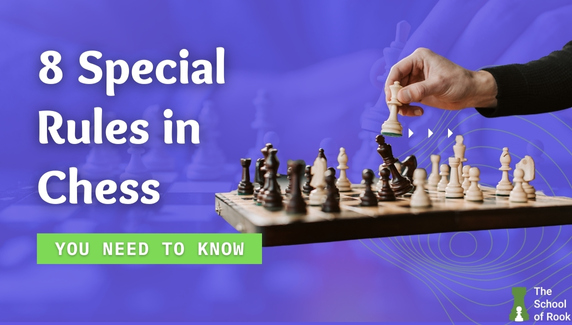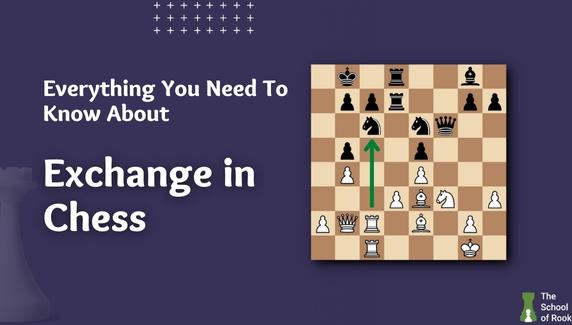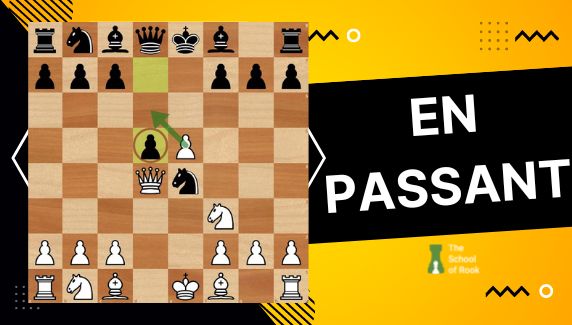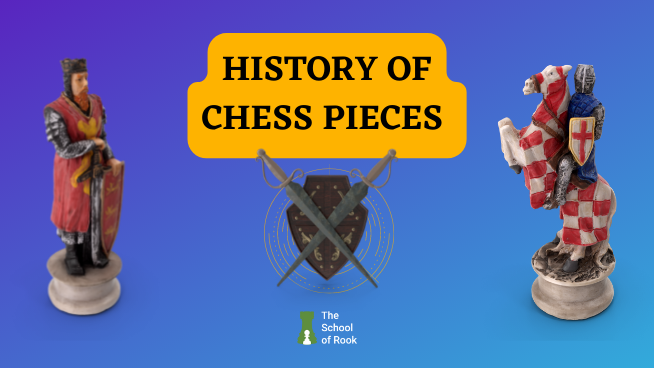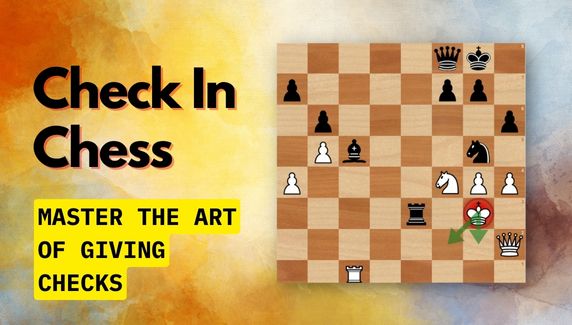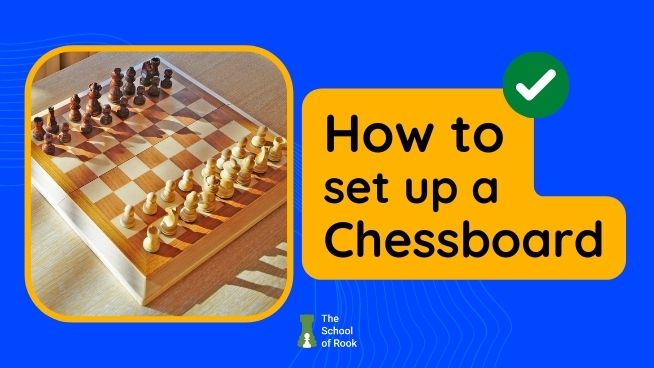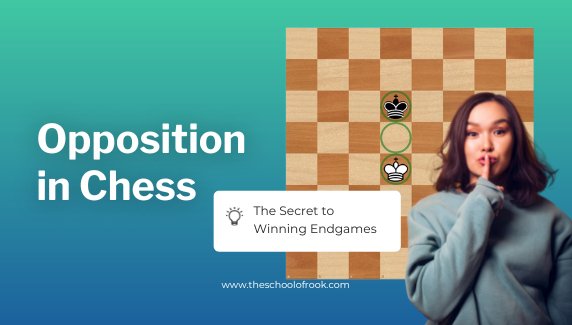
Endgames can be brutal. And if it’s just the kings and pawns remaining on the board, it can get more challenging.
After all, there are so many variations and so little time remaining on the clock.
Opposition is a fundamental concept in chess endings that will help you convert a win easily once you understand it correctly.
Read on to know what opposition is, how to use it to win a game, and how to use it to draw when losing a game.
What is Opposition in chess?
Opposition is a chess position where the kings stand opposite one another, separated by an odd number of squares. The kings can be in the same rank or file.
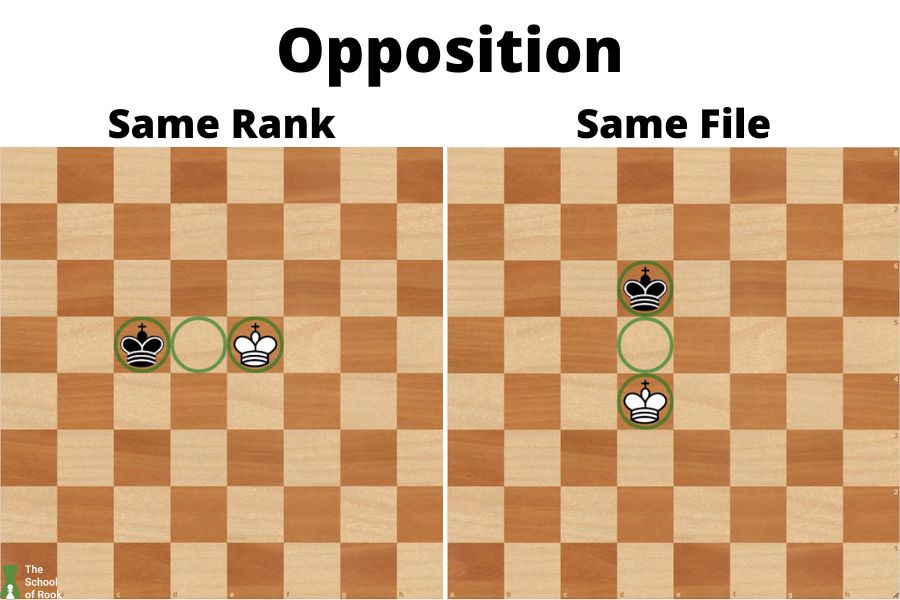
Opposition occurs in endgames when only kings and pawns are left on the board.
Whichever side moves their king into the “opposition” position first, they have an advantage since the opponent king has to move away.
Let’s look at the following example to know what a chess opposition looks like:
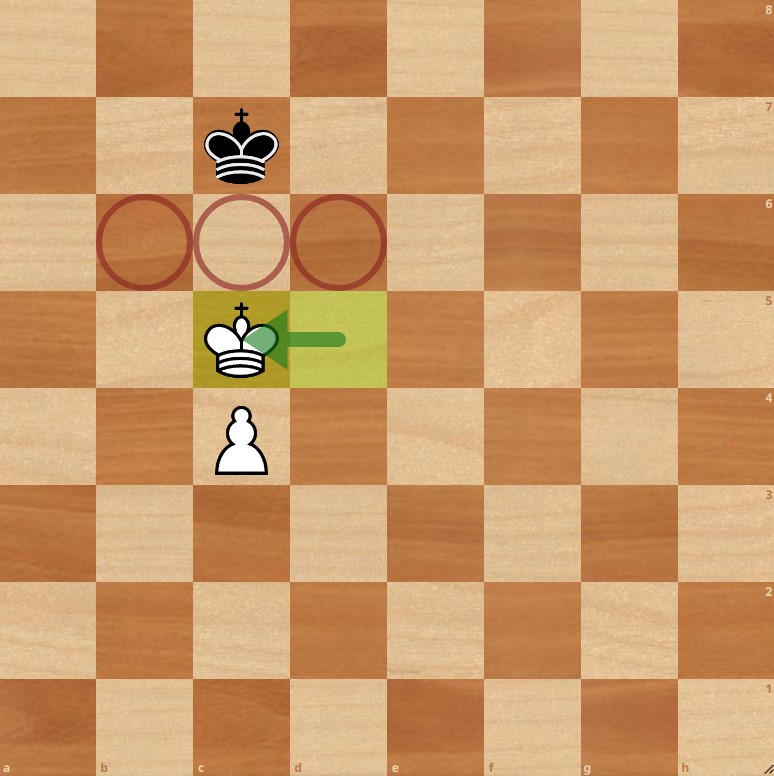
In this example, White takes the opposition position by playing Kc5. This prevents the Black king from moving to b6, c6, and d6, i.e., the 6th rank.
Opposition rules in chess
Opposition is a special maneuver where the one who takes the opposition position first “wins” depending on the following rules:
- Both kings are on the same color square.
- Both kings are on the same file or rank.
- Both kings are separated by an odd number of squares.
Types of Opposition
There are 5 types of opposition in chess:
- Vertical Opposition
- Horizontal Opposition
- Diagonal Opposition
- Distant Opposition
- Indirect Opposition
Vertical Opposition
Vertical opposition occurs when the kings are on the same file, separated by one square.
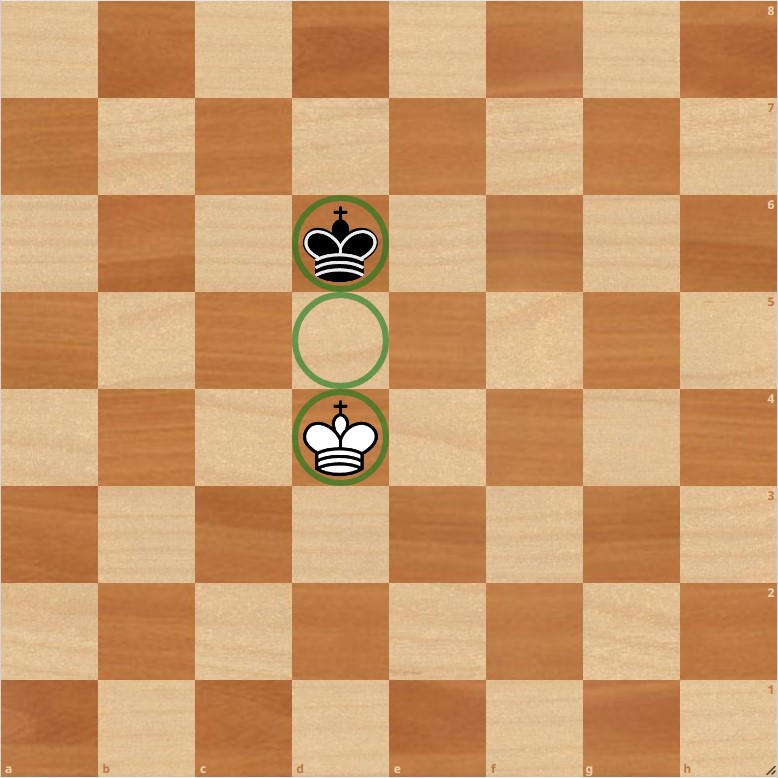
Horizontal Opposition
Horizontal opposition occurs when the kings are on the same rank, separated by one square.
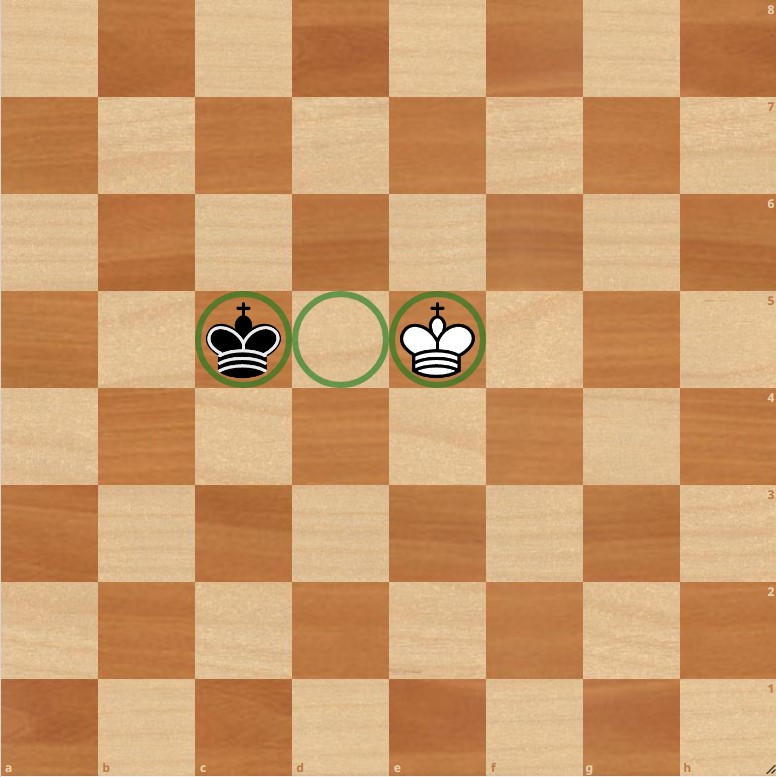
Diagonal Opposition
Diagonal opposition is when the opposition occurs diagonally.
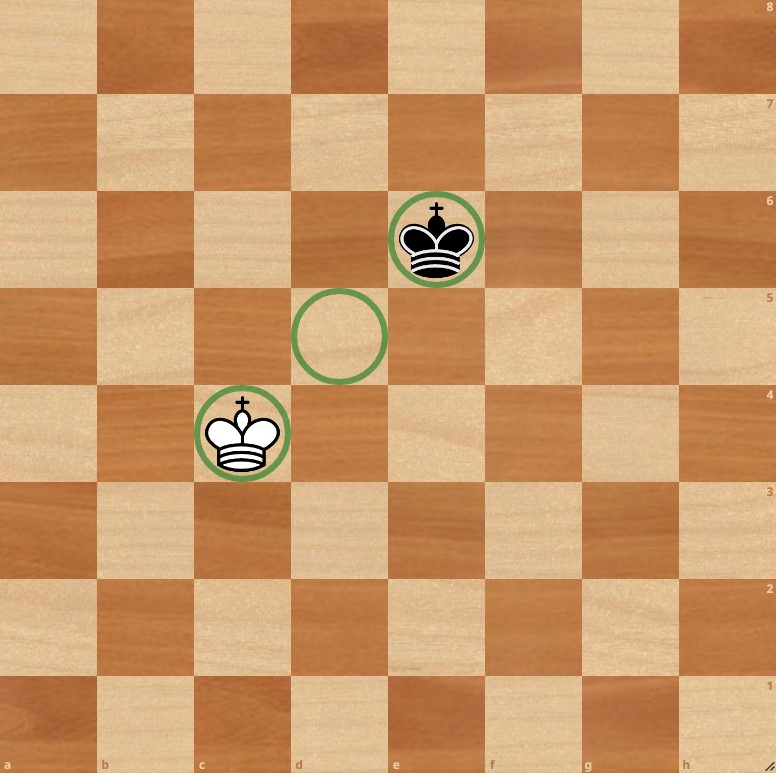
Distant Opposition
Distant opposition occurs when both the kings are on the same rank, file, or diagonal, but there are 3 or 5 squares between them. It’s essentially direct opposition from a distance.
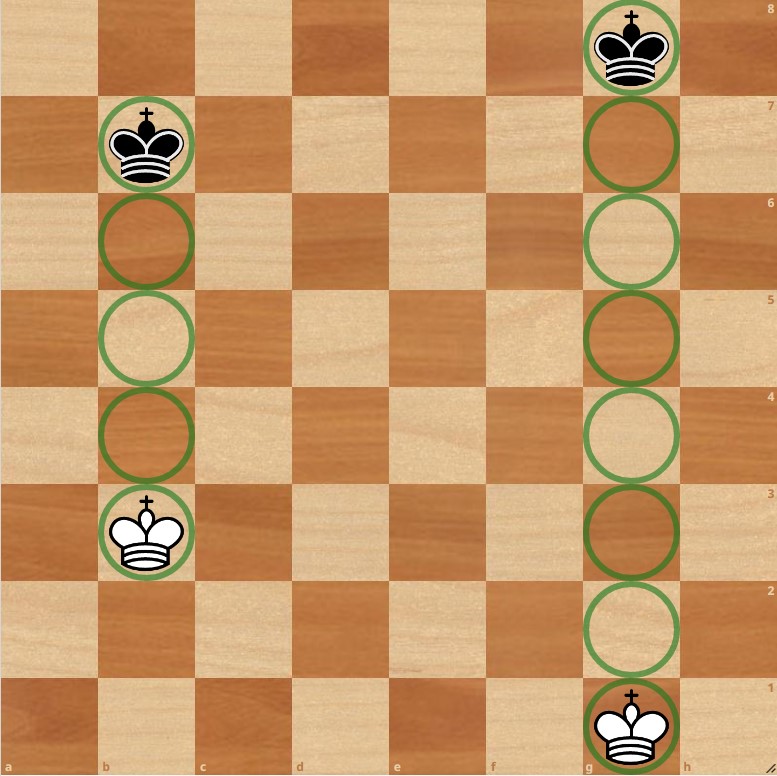
Indirect Opposition
Indirect opposition is a unique opposition type when the kings aren’t on the same rank or file but follow the other opposition rules as below:
- Both kings are on the same color squares.
- An odd number of squares separates both kings.
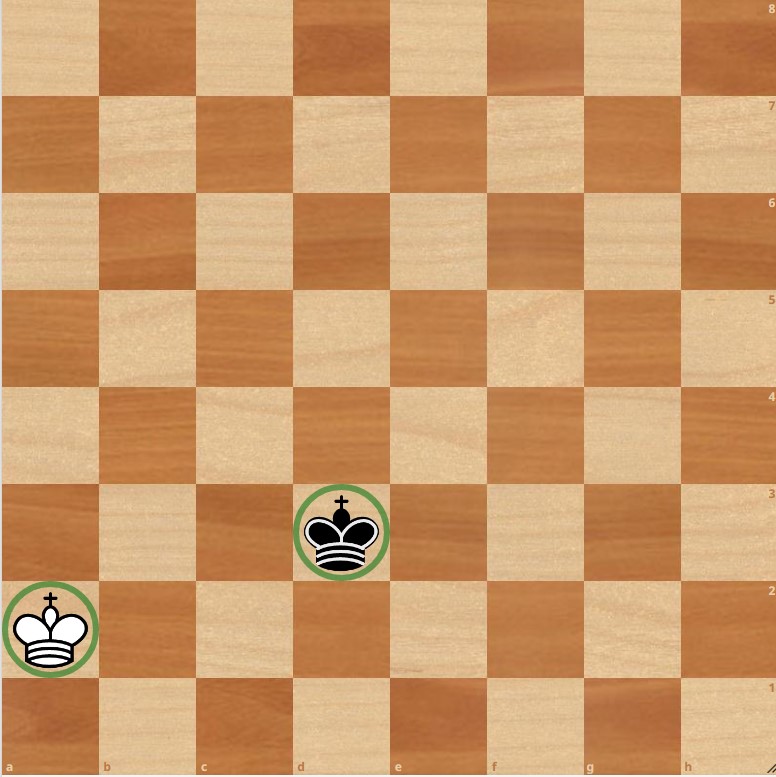
Indirect opposition is also known as virtual opposition as it doesn’t follow all the opposition rules but is almost like one.
Indirect opposition is also called oblique opposition as the kings are at an angle, unlike other opposition types.
How to win endgames using Opposition?
Winning pawn endgames is tricky as the lack of pieces on the board doubles the effort you need to put in for pawn promotion.
This is where opposition helps you convert an uneventful game into a win. Let’s look at the following example:
It’s White to play and convert the pawn into a queen. What do you think White should play?
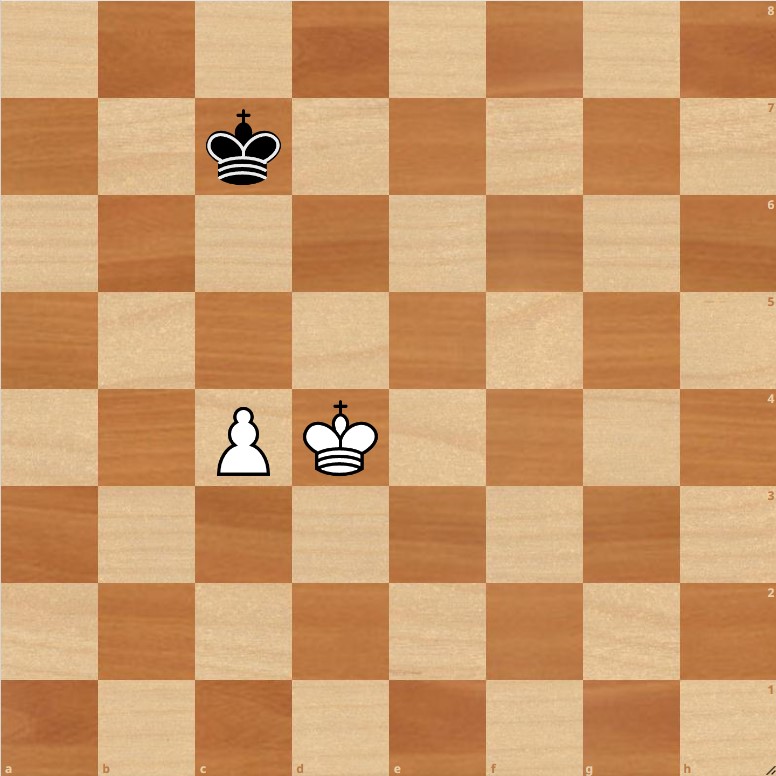
Here’s the solution:
Let’s look at the same example and see what will happen if White pushes the pawn ahead instead of taking the opposition position.
As you can see, advancing the pawn rather than taking opposition leads to a stalemate. If you don’t take opposition, your opponent will, and a winning position will turn into a draw.
Here’s another example: White to play and promote its pawn. What do you think White should play since Black already has the opposition?
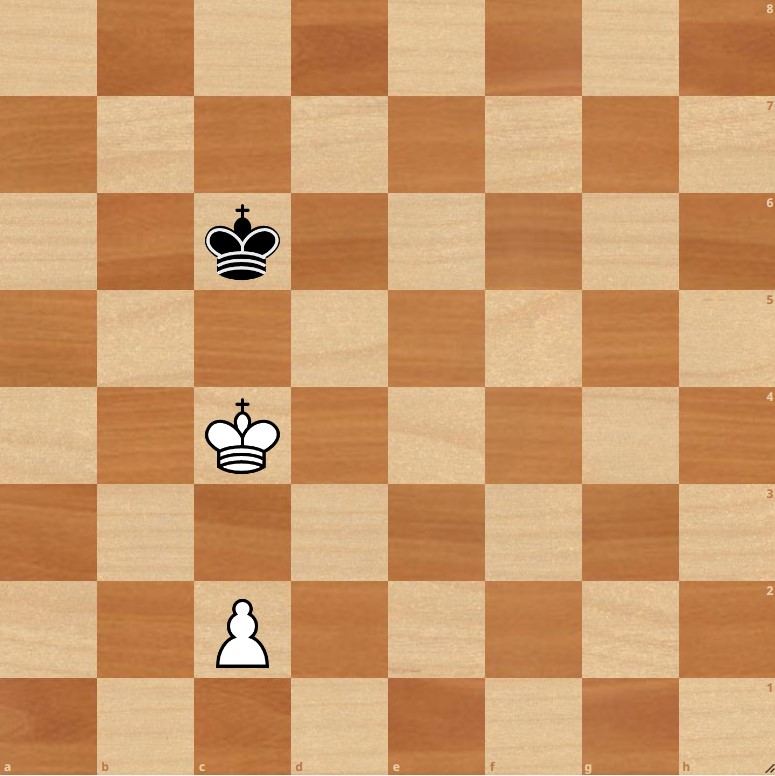
Here’s the solution:
Click “Start” to find the answer.
Opposition examples in chess games
Opposition Game #1
The following game was played between Svetozar Gligorić and Bobby Fischer in 1959.
The best outcome for Black over here is a draw since he has no pieces remaining. Any guesses what Black plays that result in a draw?
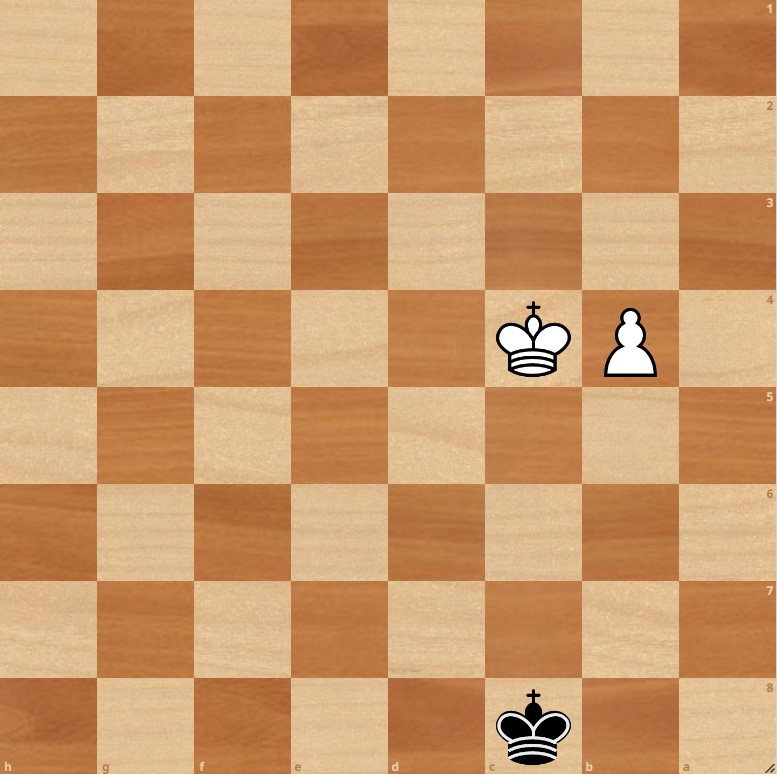
Here’s the solution:
Opposition Game #2
The following game was played between Alireza Firouzja and Magnus Carlsen in 2020, which resulted in Black winning.
However, we’ll be looking at a position where White could have drawn the game if he had maintained opposition throughout the endgame. Any guess what White should play here?
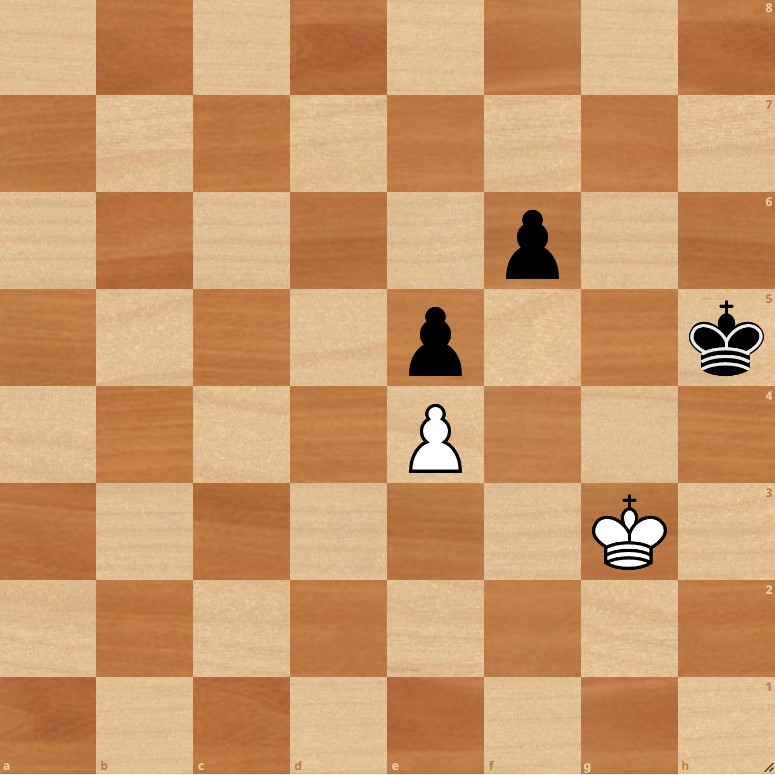
Here’s the solution:
Related Post
Opposition puzzles
Opposition puzzle #1
White to play and win!
Opposition puzzle #2
White to play and win!

